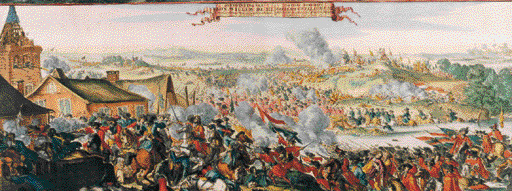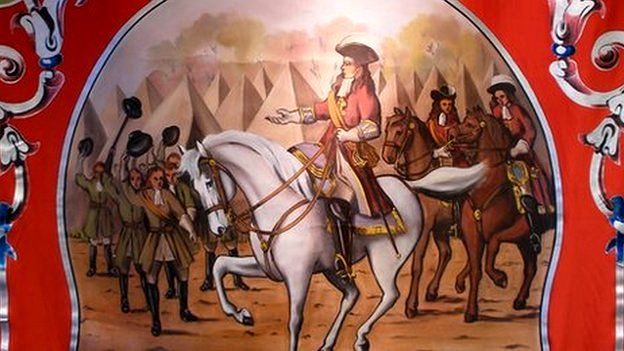King Billy Day
CELEBRATING 1 YEAR OF KING BILLY ON ST. On March 17, we have a double celebration. Not only do we pay tribute to St. Patrick with green treats and stuff, but we, your beloved King Billy Casino, also mark one year of operations! Some people tell lies. Others invent stories. And a few create myths. But King Billy never lies! This is why April 1 is the April Truth Day in the Kingdom! And we celebrate it with a unique offer! Bonus Free Spins Bonus Code; 35% up to €/$100: 35 Free Spins + 35 Free Spins on Tombstone. Autoplay is paused. You're signed out. Videos you watch may be added to the TV's watch history and influence TV recommendations. To avoid this, cancel and sign in to YouTube on your.
Early years
William was born on 4 November 1650 in The Hague. It was not an auspicious entry into the world. His father, William II of Orange, had just died of smallpox and his English mother, Mary, had her bedchamber swathed in black to mourn him. Mary’s father and William’s grandfather, Charles I, had been brutally beheaded in London only the previous year. Mary in turn died of smallpox when William was 10 years old. BBC Northern Ireland’s ‘You Thought You Knew King Billy’ explores William’s childhood home.
The young William was groomed to lead the powerful House of Orange and to become a ‘Stadtholder’, or head of state of the Dutch Republic. He learned to be astute and distrustful from an early age.
A Protestant champion
William became a hero to his people in 1673 when he drove the invading Catholic forces of Louis XIV of France out of most of the Dutch Republic. ‘Timewatch, Vision of a Conqueror’ describes the aftermath of William’s victory and the start of his lifelong rivalry with Louis.
William the autocrat
Brought up to believe he was an instrument of God, William could be impatient with others. This trait is evidenced by his behaviour in the chambers of the Dutch government.
William and Mary
In 1677, William married his cousin Mary. It was his 27th birthday. Mary was the eldest daughter of James, Duke of York, who was the brother of Charles II and heir to the English throne. James was a convert to Catholicism and had married a Catholic princess from Italy. Protestants worried that any son born to the couple would eventually become a Catholic king.
The marriage of William and Mary had been encouraged by Charles II, Mary’s uncle and James’s brother. By encouraging James’s Protestant daughter Mary to marry William of Orange, it raised the prospect of a Protestant heir to the throne. Through this, Charles II hoped to allay concerns that James would establish a Catholic dynasty. BBC Northern Ireland’s ‘You Thought You Knew King Billy’ attempts to encapsulate a complex situation.
William had his own reasons for marrying Mary. He hoped their union would cement an Anglo-Dutch alliance against Louis XIV and bring another important ally into his struggle with the French king.



James II
Charles II died in 1685 and James became King James II. Many in Protestant England were deeply suspicious of the new Catholic monarch. When his wife gave birth to a son in the summer of 1688 it confirmed their worst fears of a Catholic succession.Dr. Eamon Duffy (Magdalene College, Cambridge) explains the 17th century Protestant terror of Catholics.
This meant that James II’s Protestant daughter, Mary, wife of William of Orange, was no longer next in line to the throne. Alarmed by the situation, a group of James's Protestant opponents secretly invited William to invade England and oust his father-in-law. BBC Northern Ireland’s ‘You Thought You Knew King Billy’ sums up the situation from William’s perspective.
Many Englishmen supported William and, after some prominent English nobles defected to the invader, James II chose not to fight. He was subsequently captured and then allowed to escape to exile in France.
The Glorious Revolution
Early in 1689, the English Parliament formally offered William and Mary the throne as joint monarchs, an event known as the ‘Glorious Revolution’.
William III of Orange was now William III of England and Ireland, and William II of Scotland.
The new monarchs could not rule with the same direct power as their predecessors. They accepted Parliament’s ‘Declaration of Rights’, later called ‘Bill of Rights’. This restricted the king’s power and marked an important transition towards the system of parliamentary rule that exists to this day.
BBC Northern Ireland’s ‘You Thought You Knew King Billy’ describes the extraordinary events that brought William to the throne.
After their coronation, William and Mary moved into Hampton Court Palace. Historian Maureen Waller describes the couple’s comfortable living arrangements.
Their initial mismatch seems to have made for a happy marriage.

Battle of the Boyne
In March 1689, James landed in Ireland with French troops supplied by William of Orange’s sworn enemy, Louis XIV. James planned to use Ireland as a base from which to invade England and recover his throne.
In response William raised a huge invasion force, the largest Ireland had ever seen. In July 1690 he decisively defeated James at the Battle of the Boyne. James fled once again to France.
The victory is still commemorated every year in Northern Ireland on 12 July by the Orange Order, named for William of Orange.
The Grand Alliance
Defeating Louis XIV of France remained William's focus throughout his life. In 1689 he had brought Britain into the League of Augsburg against France, transforming it into the ‘Grand Alliance’. For the next eight years he was often away fighting, leaving his wife to rule in his absence.
In 1694 William set up the Bank of England in order to fund his war against Louis XIV.
Under William’s leadership, the diverse Grand Alliance held together and in 1697 Louis XIV relinquished much of the territory he had won by conquest.
Felled by a mole
In 1694 William’s wife Mary died of smallpox. Inconsolable with grief, he fainted at her bedside.
He continued to rule alone. Then in February 1702, William’s horse stumbled on a molehill at Hampton Court and he was thrown, breaking his collarbone. His health, which had never been strong, deteriorated rapidly. He died on 8 March.
When courtiers undressed the king they found he was wearing Mary’s wedding ring and a lock of her hair close to his heart.
King Billy Daycare
William had no heir and his death brought an end to the House of Orange.
King Billy Dayton
The supporters of James II, who had died in exile the year before, did not mourn him and toasted the mole who made his horse trip as ‘the little gentleman in the black velvet waistcoat’.